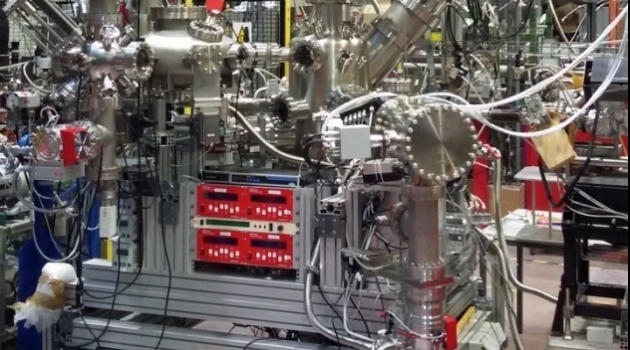Joint laboratory inaugurated by physicists in Uppsala and Berlin
In the beginning of november, the Uppsala Berlin Joint Laboratory was inaugurated, including two large instruments based on technology developed at Uppsala University. The technology will facilitate advanced joint studies of electron structures in matter with the Helmhotz Zentrum Berlin für Materialen und Energie.
The Uppsala Berlin Joint Laboratory will be housed in the BESSY II, an advanced synchrotron radiation facility operated by the Helmholtz Centrum Berlin used to study the electron structure of materials.
The project encompasses two large instruments: Firstly, a beamline for studies of organic materials of interest to energy production and molecular electronics (Low Dose Photoemission). Secondly, an experimental station for advanced electron spectroscopic measurements, which also enables the study of coinciding electrons called CoESCA (Coincidence ESCA).
‘Here, two interconnected spectrometers are used. Because of this, we are able to study processes where two electrons are emitted. The name refers to the method of Electron Spectroscopy for Chemical Analysis (ESCA) developed by the late Nobel laurate and Uppsala professor Kai Siegbahn’, Nils Mårtensson says.
He coordinates the Swedish part of the collaboration with Svante Svensson, both of whom are professors of physics at Uppsala University.
New spectrometer brought to bear
The main component of both experimental stations is the new Uppsala-developed spectrometer ARTOF, which allows for multidimensional and time-resolved measurements. BESSY II offers an optimal environment for studies with the new spectrometer, Nils Mårtensson says.
‘Although the MAX IV facility in Lund will be the most brilliant synchrotron light source in the world for the next few years, it is not optimized for short pulses and time-resolved research as is the focus for our project.’
Researchers to have ample beam time
The Uppsala Berlin Joint Laboratory is built on an agreement between Helmholtz Zentrum Berlin and the Department of Physics and Astronomy at Uppsala University. The agreement includes giving researchers from Uppsala and Sweden priority access to x-radiation with unique properties at the BESSY II in Berlin.
‘It will be of great value to several important activities at Uppsala University: e.g. Solar Cell-and Advanced Battery research, as well as fundamental condensed matter science’, Nils Mårtensson says.
The Swedish funding chiefly stems from a grant from the European Research Council (ERC) to Nils Mårtensson. Helmholtz Zentrum Berlin has also contributed substantially to the construction and the collaboration.
Annica Hulth

